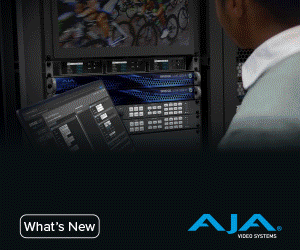Filmmaking meets photography: How and why to extract stills from 4K+ footage

Major industry trend blurs the line between still images and video.
Extracting still frames from 8K video may soon become the ultimate in still photography, as explored by Vincent Laforet. Indeed, the emergence of 4k+ resolutions has enabled greater flexibility for filmmakers and photographers alike. Working from a single camera is now a suitable setup for almost every occasion.
It’s hard to believe that photography and video were once kept as separate as chalk and cheese. Instead of struggling to take the perfect photo, camera crews can now direct a model and capture short video clips filled with potential images. After all, from every second of footage in 8K, you can choose from 60 still frames. But how to extract them?
Unfortunately, it can be a tedious, manual process to extract stills via editing suites like Final Cut Pro or Adobe Premiere Pro. In the move towards a video-based workflow, photographers have found themselves in need of applications and plugins that can happily process both mediums.
Andres Lesauvage is one such professional. Throughout his 30-year career in film and photography, Andy has dabbled a bit of everything, working across a broad range of cameras and codecs. Now, he’s finding that more and more work can be completed with your average Panasonic 4k+ camera, if combined with the right software.
“We jumped onto 6k as soon as it was available. We could see the future moving quickly away from print and onto screen. Once you have learned to harness both photo and video, it becomes second nature. The quality of both video and still images from 6k is superb – sharpness depth and resolution are a huge improvement.”
For Andy, media management software isn’t just helpful, it’s a necessity. Using a simple five step process, Andy is able to batch export sub clips from his shots, storing the frames into a folder of his choice – and saving an immense amount of time in the process.
5 no-fuss steps to extract still images
1. On set, instead of struggling to take the perfect photo, camera crews can now direct a model and capture short video clips filled with potential images.
2. From there, we can view the SD card and load up videos with a media management application. At Pout Studios, we use Kyno, as files can be accessed directly from your hard drive, Jellyfish or SD card. There’s no need to move media or waste time waiting for terabytes of data to download.
3. Next, users will need to pinpoint the shots they need, sometimes lost in a huge abundance of footage. Kyno employs media-aware filters, markers, tags and ratings, drilling down to retrieve the specified clips. That alone has made my life so much more easier, saving an immense amount of time.
4. Then comes the simple task of marking up sub-clips from your video files. Often I can leave a client to select their own still images, as Kyno makes it rather easy to skim through a video frame-by- frame.
5. Finally, I can batch-export selected stills in high resolution to a specific folder or drive. If needed, I can also batch-transcode or rewrap the files into many different formats, as some clients need to maintain a library of specific file types.
However, there are some challenges to shooting in a 4K 10-bit codec or higher. Footage will not playback in most editing applications – or at least not very well. To overcome this and realistically work with your clips in post production, the files need to be transcoded. This is where media management tools again come to the rescue, as Curtis Judd demonstrates throughout his YouTube tutorial working with the Panasonic GH5. We’ve now entered a digital age. Professional studios will often need to consider still images and video simultaneously, shooting in 4k to get the best out of each medium. Tools like Kyno are the missing link, needed to bring photo and video seamlessly together in a modern, multi-platform market.





